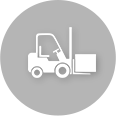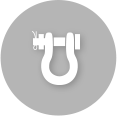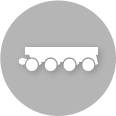Appointed Person - Person In Charge - Lift Director - Verantwoordelijk Persoon
Any type of lifting operation can be hazardous if not performed in accordance with regulations from European and national legislation, such as European Directives and country specific legislation.
Article 3.2.5 of the European Directive 2009/104/EC concerning the minimum safety and health requirements for the use of work equipment reads as follows:
“all lifting operations must be properly planned, appropriately supervised and carried out in such a way as to protect the safety of workers.”
European Directives must be incorporated into the legislation of the individual EU member states. By consequence planning and supervision of lifting operations is an identical legal requirement in all member states of the European Union.
Compare L.O.L.E.R. regulation 8 article 8.1. in the UK; Arbeidsomstandighedenbesluit Article 7.18a paragraph 8 and 9 in the Netherlands; Betriebssicherheitsverordnung Anhang 2 Article 4.2.3 in Germany and Codex boek IV titel 4 Arbeidsmiddelen voor het hijsen of heffen van lasten Art. IV.4-16 in Belgium to name some examples.
In summary: to ensure that all lifting operations conducted in the workplace are safe, the law in all countries of the European Union requires that any lifting operation be planned and overseen by an Appointed Person.
In this guideline, we look into the definition of the Appointed Person for lifting operations, explain what this individual does, his duties and responsibilities, how to become Appointed Person, what training is required and outline some other common roles involved in lifting operations.
Markten
Kennisbank
- Verantwoordelijk Persoon hijswerkzaamheden - alles wat u moet weten
- Gids voor veilig gebruik van Bovenloop - Portaal - Kolom kranen en takels
- Gids voor intern zwaar transport in de maakindustrie
- Kraanopstelplaatsen bij de bouw van windturbines opgesteld door STOWA
- Checklist voor veilig transport van extra grote wind turbine componenten
- ICSA - Richtlijn voor het hijsen van een last met meerdere mobiele kranen
- Richtlijn Torenkranen zoals opgesteld door Bouwend Nederland


- Kokermolen 6 - unit 1.07
- 3994 DH Houten (Utrecht)
- Nederland

Heffen
Heffen is een activiteit waarbij de last op een gecontroleerde en geleide wijze wordt opgeheven, normaal gesproken vanaf de onderkant van de last met bijvoorbeeld een vorkheftruck, schroefvijzel, dommekracht, hydraulische vijzel, teenvijzel, hefkussen, etc.

Rigging
Het verplaatsen van een last horizontaal, verticaal of onder andere hoeken en mogelijk door verschillende vloerniveaus, door gebruik te maken van verschillende soorten hef- en hijsmiddelen. Hef- en hijsmiddelen worden daarbij onderverdeeld in hef- en hijswerktuigen versus hef- en hijsgereedschappen.

Hijsen
Hijsen is een activiteit waarbij de last wordt opgehangen en waarbij deze vrij hangt, bijvoorbeeld door middel van één of meerdere hijskranen, kettingtakels, rateltakels, hijsportaal, balkklem, lier, drijvende bok, vijzel met bundel voorspanstaaldraad, enz.

Gespecialiseerd transport
Transport van zware, abnormale en extra grote lasten door middel van gespecialiseerde transportmiddelen zoals zelfrijdende modulaire transport eenheden (zogenaamde SPMT"s), conventionele modulaire en meer-assige trailers, slede technieken, zware industriële rollensets en zware "rolschaatsen" op basis van eindloze kettingtechnieken.


 +31-(0)30-6342078
+31-(0)30-6342078 info@hadimpro.com
info@hadimpro.com


